The results of architectural practice always seem to be realized in physical form, and by that I mean ideas being materialised as part of the built environment. Most of the time architecture is defined along the following lines: Architecture is the art and technique of designing and building, as distinguished from the skills associated with construction. It is both the process and the product of sketching, conceiving, planning, designing, and constructing buildings or other structures. The term comes from Latin, architectura; from Ancient Greek ἀρχιτέκτων (arkhitéktōn) ‘architect’; from ἀρχι- (arkhi-) ‘chief’, and τέκτων (téktōn) ‘creator’. Architectural works, in the material form of buildings, are often perceived as cultural symbols and as works of art. Historical civilizations are often identified with their surviving architectural achievements.
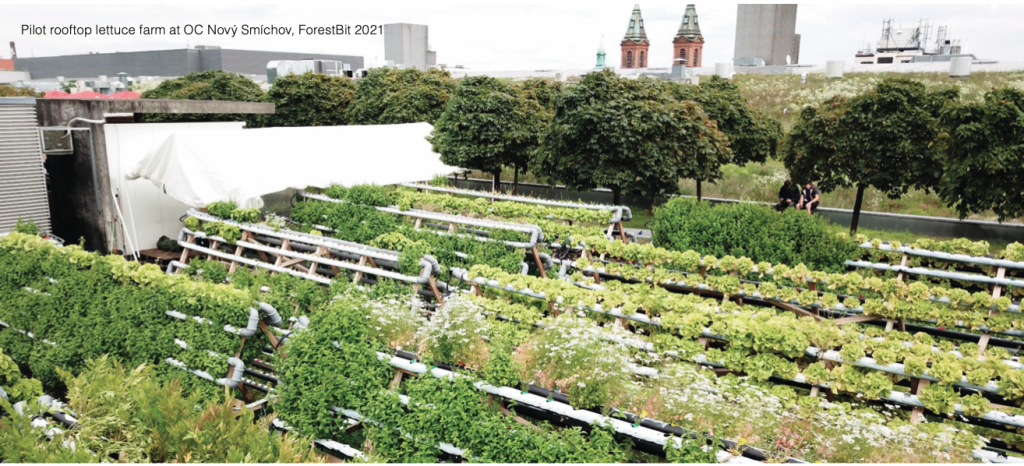
But architecture is not just the art and technique of designing and building, it is also a research-based, theoretical, critical, and inventive practice that exceeds the definition given above, and is always reinventing itself. The Reinvention of architecture as a practice can also be seen in Tereza Nalezená’s work. She is an architect and urban planner from the Czech Republic. Many years of experience working on large urban projects in the studio Jakub Cigler Architekti, which promoted the greening of cities and blue-green infrastructure, led Nalezená to sustainable construction. She is also a mother of two children who cares about the landscape and environment that is being created for future generations. She is currently working on her doctoral study of sustainable architecture within the Fakulta umění a architektury (Faculty of Art and Architecture) at the Technická univerzita v Liberci (Technical University of Liberec – TUL), where she is actively involved in reducing the negative effects of construction on the landscape, settlements and society. This is where the project of rooftop hydroponic farms was born – cooling the heat islands of cities and supporting biodiversity, food security and resilience.
The project was named Lettuce on the Roof, or Salát na střeše. This network of rooftop farms is based on the idea of hydroponics, which allows plants to grow without soil. The units are lightweight, can be installed on virtually any existing or new flat roof, and can produce a surprising amount of salad and herbs from April to October. To allow the solution to be scaled up as efficiently as possible, a plan with three options has been prepared. The first option is the farm as a service. A company, group of people or institution can rent it as a service for a monthly flat rate. For example, a company may decide to install a farm on its roof to grow fresh salad plants and herbs. The Salát na střeše network will take care of the installation, maintenance and harvesting. Employees or the company canteen will then receive fresh products weekly from April to October, and it will also make the building’s roof green and the rooms inside cooler. The network works on a similar principle to that of community energy. It redistributes the product for immediate consumption within the network, balancing those with a surplus or shortage of production. A single rooftop farm is able to achieve large-scale production, which is why it may be necessary to redistribute any overproduction to another location within the network. The food grown on the roof of a company or institution can be used to meet their employees’ needs, or can be used to provide fresh vegetables to school canteens, homes for the elderly, and other users in the area which cannot have a rooftop farm of their own, but are happy to consume the produce. Moreover, the network means that any shortfall in the production of one farm can be covered by production from another.
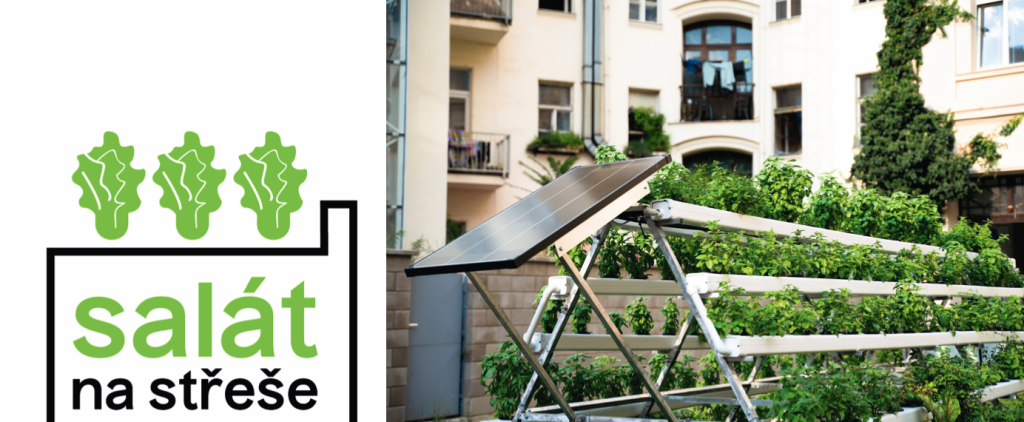
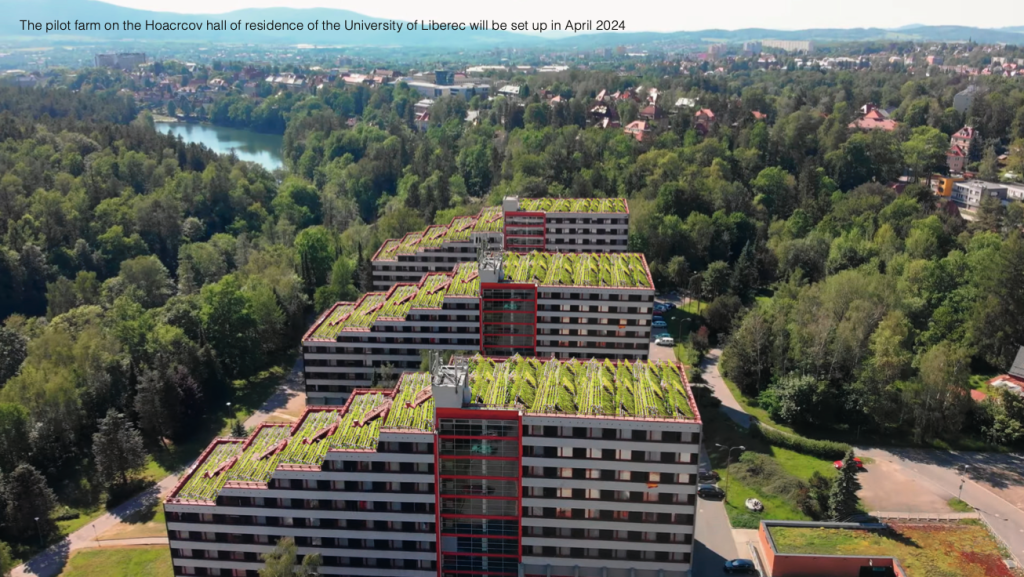
The second option is that the owner of the roof – the company, institution or other organisation – takes care of their own roof garden. The Salát na střeše network will supply all the necessary equipment together with the project, permit, roof installation and consulting service regarding maintenance or green marketing. The third option is that the salad plants and herbs from the rooftop farms will be available for purchase at farmer’s markets or in grocery stores. Local bistros and bars will also be able to order regular deliveries within the farm network for a monthly flat rate. Rooftop salad farms are light and easy to install. In order to ensure the good hygiene of the produce, the network of rooftop hydroponic farms will use only stainless steel stands from the ForestBit company for its farms, which have already been tested and thoroughly developed. The knowledge and know-how from the fields of architecture, roof landscapes and the technical parameters of roofs is then added.
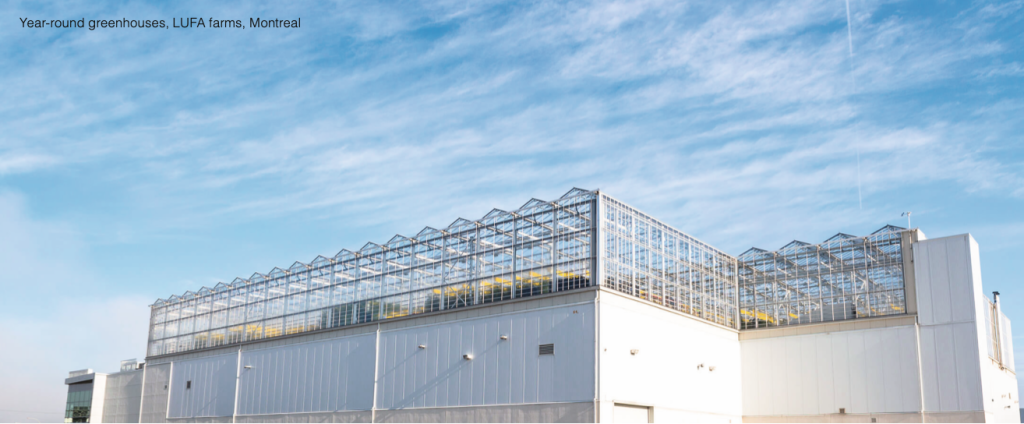
This year the network is going to launch a pilot rooftop farm on the TUL campus. Products will be delivered to, for example, Kávárna Bez konceptu, Bistro Široká, the TUL canteen, or they will be available for direct purchase. The pilot scheme also has an educational dimension and aims to introduce the idea of rooftop farms to the world. Following the model of the pilot farm at OC Nový Smíchov (ForestBit 2021), the aim is to test a farm with larger production on the walkable roofs within the TUL campus this year (one elder roof and one modern roof to compare cooling effect on different roof types). This pilot will serve as a demo to many commercial interested parties who want to apply this solution in Liberec region – for example DB Schenker, owner of many hall buildings). These commercial farms should start during next year (2025). The team wants to prove the cooling of the roofs and that the resulting produce will be able to be enjoyed by local canteens, bars, bistros or the students themselves.
The team did a lot of research for the project, and decided on the two most important goals they want to achieve in the early stages. One is that large areas of the roofs of halls should be used for growing salad plants and herbs, and ideally the produce should first go to food distribution warehouses (e.g. Tesco, Rohlík), from where it can be delivered directly to stores. The plan is to develop the project from a small scale by gradually expanding the network of farms and proving its economic sustainability. The second goal
is realising the vision of year-round rooftop greenhouses, making use of the waste heat and CO2 produced by buildings. Such structures already exist in Europe, as well as in Montreal, Canada, where they produce 11 tons of vegetables per week from one roof of large hall all year round, and the team would like to see the same thing happening in the Czech Republic. The TUL not only provides the project with a place to test its ideas, but also space for research into sustainable construction, and support for cooperation with other scientific institutions, innovative companies and foreign projects.
Rethinking architectural narratives is crucial of the profession is going to evolve in different directions. Interdisciplinary cooperation can bring better solutions that will help resolve some of the problems we are facing as a society. The project to develop a network of rooftop hydroponic farms is a great example of how knowledge from different fields can be combined with technology to address the problems of hot cities, long food journeys, and the expansion of logistics facilities into the countryside, with a relatively simple solution of rooftop gardens growing vegetables and herbs.
Source reference:“Architecture”. Wikipedia. March 23, 2024. https://en.wikipedia.org/wiki/Architecture#cite_note-6 “Architecture”. Britannica. March 23, 2024. https://www.britannica.com/topic/architecture/ Expression-of-technique Nalezena, Tereza. “Lettuce on the Roof.” Salát na střeše. March 24, 2024. https://www.salatnastrese.cz/
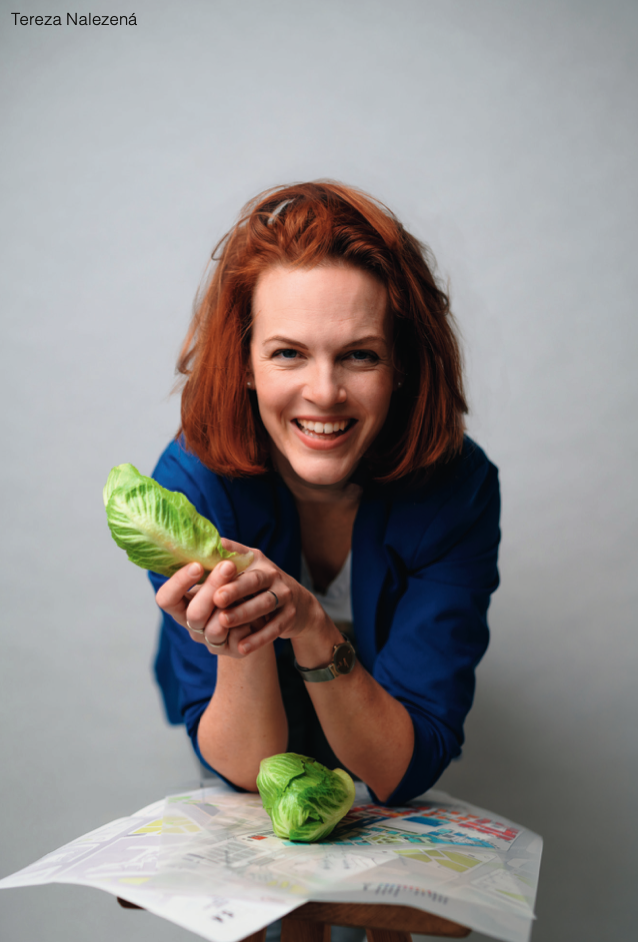
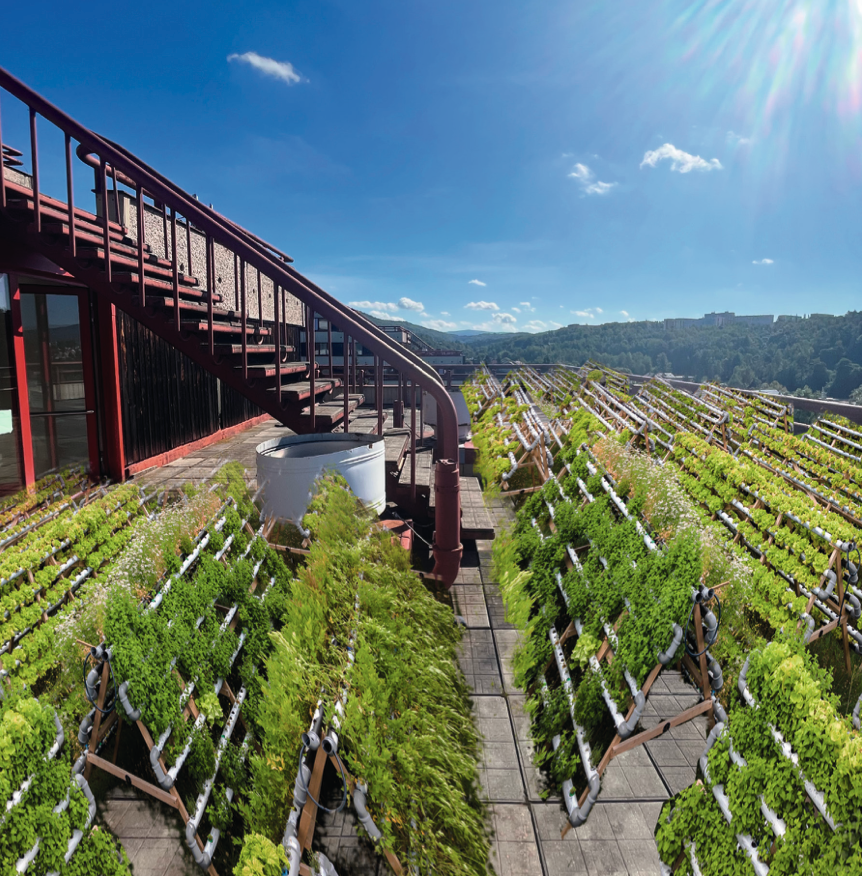
Written by:
Boštjan Tadel
Text: Patricija Pirc
Photographs: archive of Tereza Nalezená



